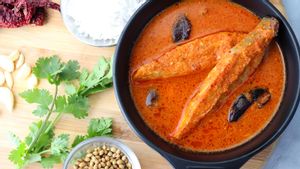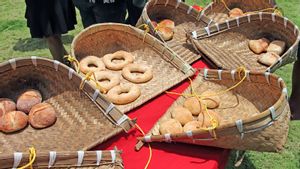Suur, sirko and sorro. The triple alliteration has always been the linchpin around which the entire universe of Goan cuisine pivots. Although they may, at first, seem almost similar to both the eyes and to the ears, they are three entirely different ingredients linked to a common source. The coconut tree!
Suur is the all-important coconut sap also known as toddy, that, when left to ferment—after a few hours from its early dawn tapping from the tree—transforms into a sour leavening agent used primarily in baking bread. When left to ferment in a clay pot for an extended period of time, it becomes sirko. This dark-hued vinegar—also generically known as Goa vinegar—is used in almost all savoury Goan food preparations, from the ubiquitous vindaloo to the fiery chicken cafreal.
Sorro on the other hand simply means 'liquor' and more pertinently in this context, coconut feni that has been distilled from the fermented suur. Often, eclipsed by its more famous and smellier counterpart, cashew fruit feni, the coconut version is no less popular and widely used in Goa as a cooking ingredient.
Three time’s the charm!
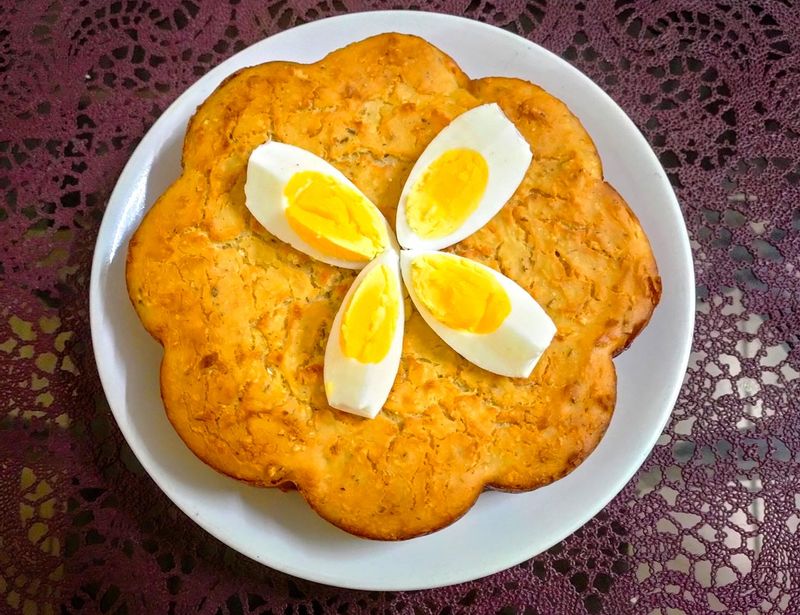
Having grown up in a predominantly Goan household, I’ve encountered all three on almost every day of my life. In all permutations and combinations. With some dishes calling for the use of a combination of two, even.
Take for instance the Portuguese colonial-influenced dish called pork asado. This roast dish starts off with an entire slab of meat being marinated in a green masala to which liberal splashes of both vinegar and toddy are added. At the time of cooking, a few tablespoons of feni are added to round off the dish with its sweet, intoxicating flavour. An asado is best accompanied by the pillowy-soft steamed bread, sanna.
Made from a fermented mix of fat-grained parboiled rice, coconut, sugar, salt and the all-important leavening agent; suur, sannas are steamed in a funnel-topped steamer-like contraption called a chondro. While sannas are generally eaten with savoury gravies, for sweet lovers there exists another iteration called godachi sanna, made with palm jaggery.
Employing the use of both toddy and vinegar is another rare heirloom dish called apa de camarao (see recipe below). This savoury cake—again of Portuguese origin—has a prawn recheado filling that has a fair amount of vinegar added to it for that piquant hit. The cake batter gets its airy texture and ‘lift’ thanks to the toddy that helps in fermentation.
Preserved goodness
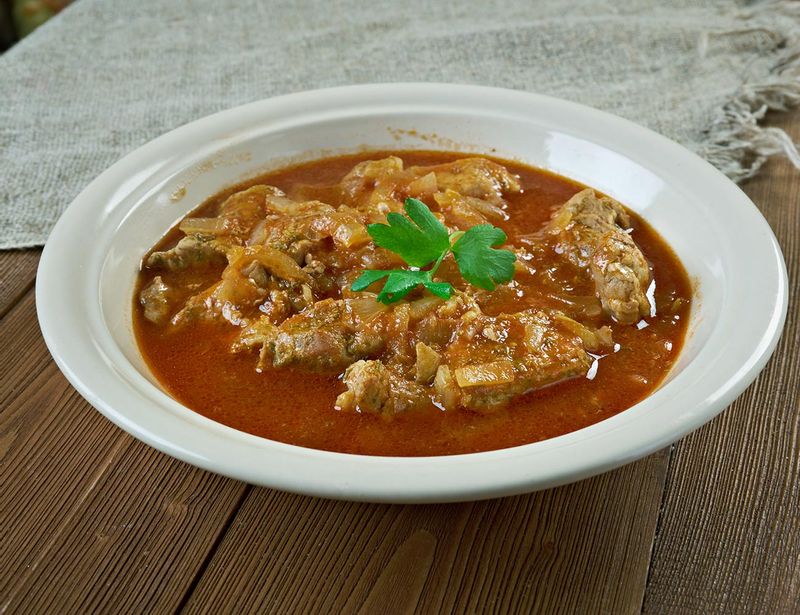
Relying heavily on the use of vinegar as the main ingredient is a plethora of Goan dishes that taste best days after they have been cooked. The preservative qualities of vinegar, not only keep them fresh but aid in giving them a well-rounded maturity of taste. Something that is prized among us Goans.
This brings us to the all-important gravies of Goan cuisine that can never be made without a generous pour of local vinegar. Originated from a preserved Portuguese dish called carne de vinha d’alhos, which simply meant meat marinated with garlic and wine, vindaloo is the prime example. The dish was one that Portuguese seafarers took with them on long voyages thanks to its long shelf life, aided by the garlic and wine. However, the Goan vindaloo of today came about when the original dish was localised and adapted by substituting the hard-to-procure red wine with coconut vinegar.
AlsoRead 2
Colonial crossover
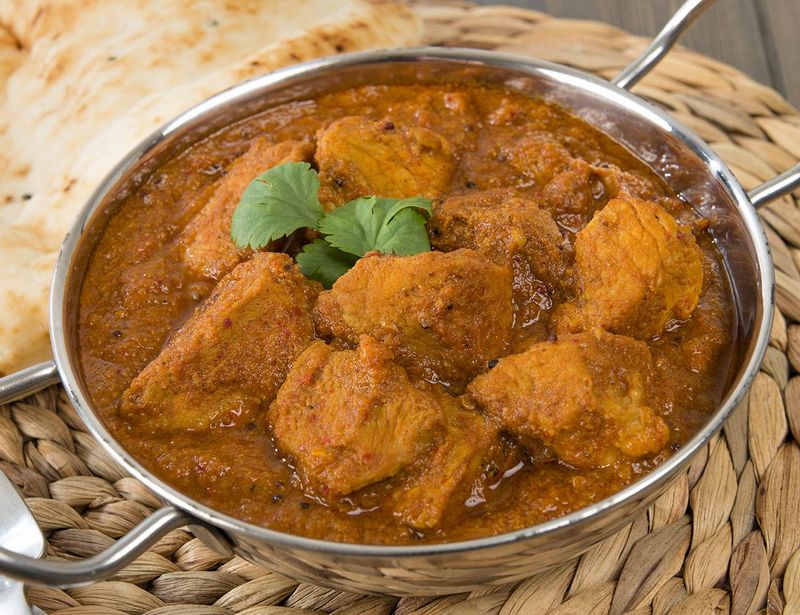
What colonisation also did for the vinegar-rich cuisine repertoire of Goa is introduce it to a few preserved dishes from other Portuguese colonies. Chief among these is the dark, rich pork stew, sorpotel. Known as sarpotel in north-eastern Brazil, the dish is a mishmash of offal like liver, lungs and heart that is mixed with meat, fat and loads of tangy vinegar.
On the other hand, chicken cafreal which is dark green, and a vinegar- and feni-heavy roast chicken dish, is known to have been brought by the Portuguese from their east African colony of Mozambique where it is called piri-piri chicken to this very day.
Such is the intricately woven tapestry of Goan cuisine. One that is embellished by myriad influences all stitched together by a tangy trio of tastemaker superstars!
Apa de Camarao recipe
Ingredients:
For the prawn filling
- 6 dried Kashmiri chillies
- 1 tbsp Goa vinegar
- 3 cloves garlic - peeled
- 50g ginger, peeled
- 3 tbsp vegetable oil
- 2 red onions, finely sliced
- 1 stick cinnamon
- 5 black peppercorns
- 4 cloves
- ½ tsp cumin seeds
- 3 tbsp vegetable oil
- ½ tsp salt
- 2 tomatoes, finely chopped
- 2½ tsp jaggery
- 300g prawns, peeled and deveined
- 2 eggs, boiled and quartered
For the batter
- 3 tbsp toddy*
- 1½ cups rice flour
- 2 tbsp jaggery
- 1 tsp salt
- 1 cup coconut, grated
- 4 eggs, at room temperature
*Note: If you wish you can replace the toddy by making a mixture of 1½ tsp dried yeast, 1 tsp jaggery, 1 tbsp lukewarm water and letting it sit for a few minutes till the mixture gets bubbly and frothy.
Method:
To make the prawn filling
- Soak chillies in vinegar and 3 tablespoons of water for 30 minutes.
- Grind the garlic and ginger to a fine paste, adding a little water if required.
- Grind the soaked chillies with the cinnamon, peppercorns, cloves and cumin seeds to a fine paste with the soaking liquid.
- Heat the oil in a medium-sized saucepan. When hot, add the onions and fry for around five minutes or until golden.
- Add the spice paste and salt to the pan and stir over low heat for 30 seconds.
- Add the ginger-garlic paste and cook for three minutes or until the raw smell of garlic has disappeared. Stir frequently while cooking. Add the tomatoes and cook, covered for 15 minutes, or until they have completely broken down. Stir and mash the tomato pieces every minute.
- Stir in the jaggery and cook for two minutes, stirring continuously. The gravy should be quite thick.
- Add the prawns and cook for about three minutes, or until they have just begun to curl and change colour. Stir gently and frequently. It is important to not overcook the prawns as they will be baked into the cake and will cook further. Once cooked, remove from the heat and allow to cool.
To make the batter
- Using a large and deep bowl, sieve the rice flour, two teaspoons of jaggery and one teaspoon of salt ensuring there are no lumps. Add the grated coconut and mix well.
- Add half a cup of water and beat well into a smooth batter.
- In a separate bowl, beat the eggs until well combined and they have a frothy texture.
- Add beaten eggs to the batter and mix well.
- Add toddy to batter and mix well. Cover the bowl, and leave it in a warm, dry place for around four hours to allow the batter to rise. It should double in size.
To make the cake
- Preheat oven to 150 degrees Celsius.
- Lightly grease a 22 cm cake tin.
- Pour half the batter into the cake tin. Bake for ten minutes to make the top surface of this bottom half of the cake firm enough to support the filling.
- Remove from oven, and working quickly, spread the prawn filling evenly on the bottom layer, leaving an unfilled edge of ½ cm. Top with the remaining batter and return to the oven.
- Bake for 45 minutes until the cake is golden brown. A skewer or toothpick inserted in the centre should come out clean.
- Allow to cool and remove from cake tin.
- Decorate with the quartered boiled egg pieces.
- Serve warm, not hot.



